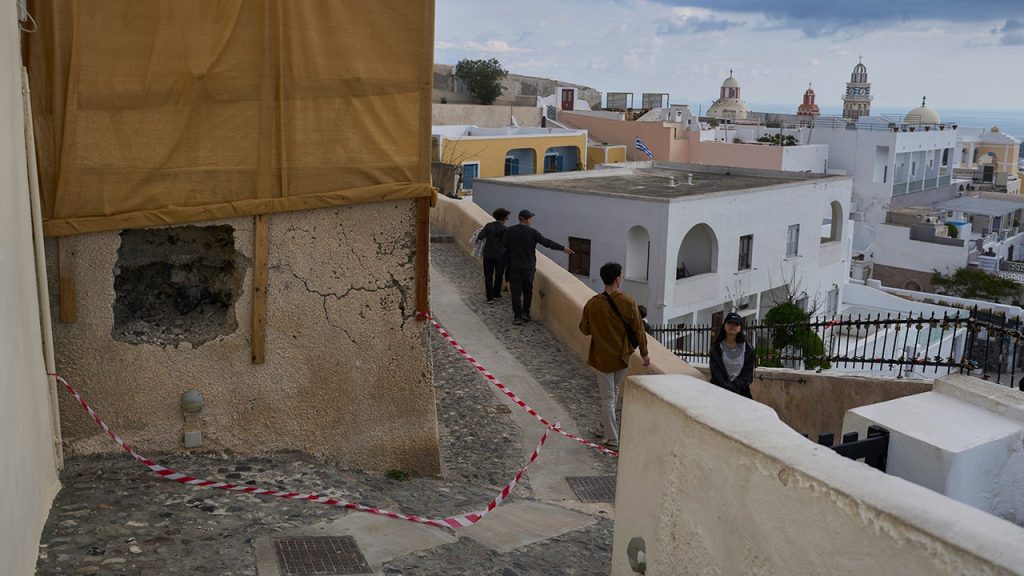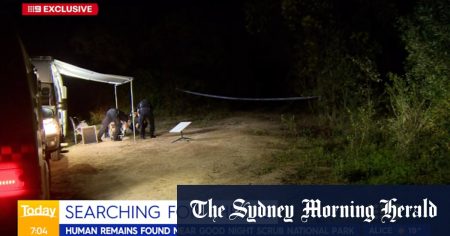The Greek island of Santorini, a popular tourist destination, has been experiencing a significant seismic swarm since last week, prompting the evacuation of thousands of residents and visitors. The series of over 200 undersea earthquakes, reaching magnitudes up to 5, has caused concern among local authorities and seismologists, leading to the implementation of precautionary measures such as the cancellation of public events, travel restrictions to the island, and a ban on construction activities in specific areas. While older buildings have sustained some cracks, no injuries have been reported so far. The earthquake swarm, characterized by a cluster of seismic events occurring closely in time and space, is believed to be linked to tectonic activity rather than volcanic unrest, despite the region’s known volcanic history.
The swarm’s epicenter, initially located near Santorini, appears to be migrating northward, suggesting a potential shift in the underlying geological stress patterns. Experts anticipate the seismic activity could persist for several weeks, with the possibility of either continued small tremors or a single, slightly stronger quake followed by a gradual decline in activity. Santorini Mayor Nikos Zorzos, while expressing cautious optimism based on consultations with seismologists, acknowledged the inherent unpredictability of such events. The absence of significant volcanic activity, despite the region’s volcanic nature, has provided some reassurance, although monitoring continues.
The ongoing earthquake swarm has prompted a large-scale evacuation from Santorini, with an estimated 9,000 people having left the island since Sunday. Authorities have deployed additional emergency flights and ferries to facilitate the departure of residents and tourists seeking to avoid potential risks associated with the continuing seismic activity. This exodus reflects the understandable apprehension surrounding the unpredictable nature of earthquake swarms and the potential for stronger tremors in the future. The prioritization of public safety has led to the restriction of travel to the island, aiming to minimize the population at risk while the seismic activity continues.
The magnitude of the evacuation underscores the significant impact of the earthquake swarm on Santorini’s local community and its tourism sector. The cancellation of public events not only aims to prevent gatherings in potentially unsafe areas but also reflects the disruption to the island’s vibrant social and cultural life. The ban on construction work in certain areas is a further precautionary measure designed to mitigate risks associated with structural instability during tremors. While the swarm has caused cracks in some older buildings, the absence of reported injuries is a positive indicator of the robustness of building codes and the effectiveness of the precautionary measures implemented.
The ongoing monitoring of the seismic activity is crucial for assessing the evolving situation and informing decisions regarding public safety. Seismologists are closely tracking the movement of the swarm’s epicenter and analyzing the frequency and magnitude of the tremors to better understand the underlying geological processes. This information will be critical in determining the duration and potential severity of the ongoing seismic activity, allowing authorities to adjust their response accordingly. The communication of accurate and timely information to the public remains paramount in managing the situation effectively and mitigating anxieties associated with the unpredictable nature of earthquakes.
While the earthquake swarm continues to cause disruption and concern, the absence of volcanic activity and the northward migration of the epicenter offer some grounds for cautious optimism. The evacuation efforts, travel restrictions, and construction bans implemented by local authorities demonstrate a proactive approach to safeguarding public safety. The ongoing monitoring of the seismic activity by seismologists provides valuable data for assessing the evolving situation and informing future decisions. The resilience of the Santorini community, coupled with the coordinated efforts of authorities and experts, will be instrumental in navigating this challenging period and ensuring the long-term safety and well-being of the island’s residents and visitors.










